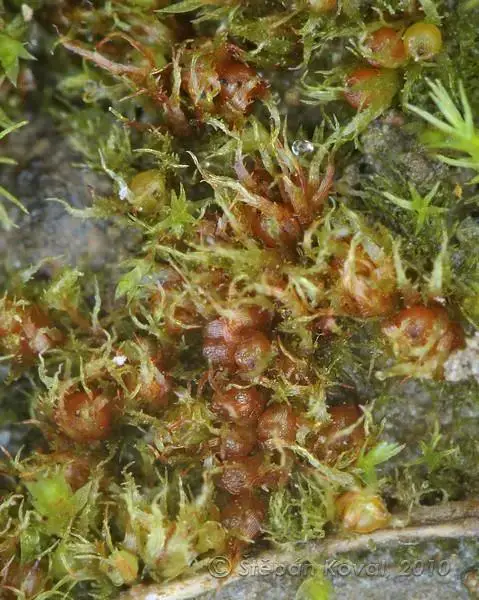
2022-03-21-18-53-36-BRadius3Smoothing1.jpg from: https://www.britishbryologicalsociety.org.uk/learning/species-finder/ephemerum-serratum/
Exploring the Fascinating World of Ephemerum Moss
Introduction
Hey moss enthusiasts! Today we’re diving into the captivating realm of Ephemerum serratum var. rutheanum (Schimp.) Jur., a tiny but mighty moss species. Part of the Ephemeraceae family, this little guy is commonly known as just Ephemerum. Get ready to geek out on some seriously cool bryophyte biology!
Background on Ephemerum Moss
Before we get into the nitty-gritty, let’s cover some basics. Ephemerum is a genus of mosses in the Bryophyta division, specifically the Bryopsida class. The name comes from the Greek word “ephemeros” meaning short-lived, referring to the brief life cycle of these mosses.
Morphology and Identification
Ephemerum serratum var. rutheanum is seriously small, usually only 1-3 mm tall. The leaves are ovate to lanceolate in shape and have

796_Ephemerum_serratum_2010_10_07_img_9095.jpg from: https://www.bryo.cz/index.php?p=mechorosty_foto&site=default&gallery=ephemerum_serratum&id=796
serrated margins (hence the species name serratum). The leaf midrib ends just below the apex.
The spore capsules are globose and immersed among the leaves. They lack a peristome (toothed rim) and open via a lid to release the spores when mature. The spores themselves are 30-40 μm in diameter and have a granular surface.
Global Distribution and Habitat
This mighty mini-moss has a wide distribution, found across Europe, Asia, Africa, and the Americas. It’s a pioneer species that grows on disturbed soil, often in

obsfoto_1aabb5a3-cbdd-4111-be6d-8052da696fab.jpg from: https://www.naturbasen.dk/art/14922/takket-doegnmos
agricultural fields, gardens, and along paths.
Ephemerum thrives in temperate regions with cool, moist winters and warm, dry summers. It prefers neutral to slightly acidic clay or loamy soils.
Ecological Roles and Adaptations
Don’t let its size fool you – Ephemerum plays an important role in its ecosystem:
- Helps prevent soil erosion
- Contributes to soil formation
- Provides shelter and moisture for soil microorganisms
- Acts as a carbon sink, absorbing CO2
To survive in its harsh pioneer habitats, E. serratum var. rutheanum

21479_6005942_4.jpg from: https://artfakta.se/naturvard/taxon/ephemerum-serratum-6005942
has some nifty adaptations:
- Rapid life cycle – it can complete its life cycle, from spore to spore, in just a few weeks when conditions are right
- Spore dormancy – spores can remain viable in the soil for years, waiting for favorable growth conditions

43400586.jpg from: https://waarneming.nl/waarneming/view/226676744?_popup=1

dae-15001886.jpg from: https://www.agefotostock.com/age/en/details-photo/botany-moss-ephemeraceae-ephemerum-serratum-drawing/DAE-15001886
- Desiccation tolerance – the moss can dry out completely and rehydrate when moisture returns
Ephemerum By the Numbers
| Characteristic | Measurement |
|---|---|
| Plant height | 1-3 mm |
| Leaf length | 1-2 mm |
| Spore size | 30-40 μm |
| Chromosome number | n=27 |
Conclusion
Ephemerum serratum var. rutheanum

Ephemerum-cohaerens-2.jpg from: https://ohiomosslichen.org/moss-ephemerum-cohaerens/ephemerum-crassinerveum/
may be small, but it sure packs a punch in the moss world. Its global distribution, ecological importance, and incredible adaptations make it a true bryological marvel.

Ephemerum_serratum_003C.JPG from: https://cisfbr.org.uk/Bryo/Cornish_Bryophytes_Ephemerum_serratum.html

Ephemerum-cohaerens1.jpg from: https://ohiomosslichen.org/moss-ephemerum-cohaerens/
So next time you’re out for a walk, keep your eyes peeled for this tiny treasure. And if you find some, take a moment to appreciate the epic biology happening at a miniature scale.
Happy moss hunting!

3373-l-2.jpg from: https://www.wildflowers.co.il/english/picture.asp?ID=21443